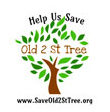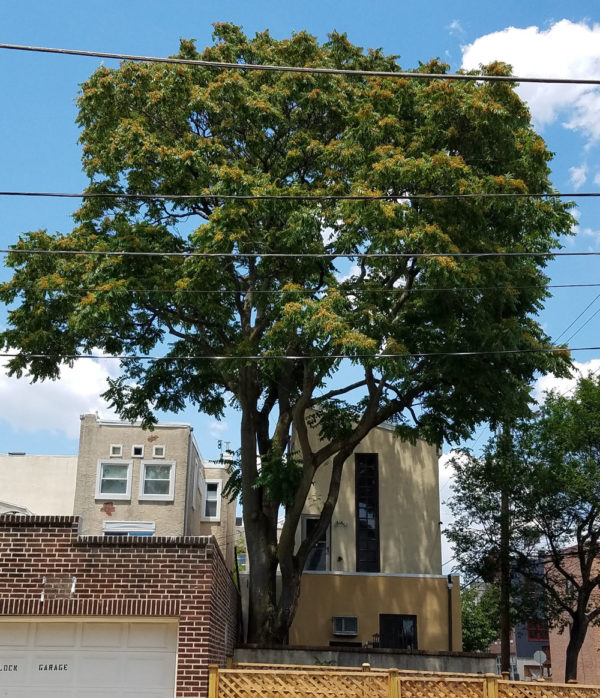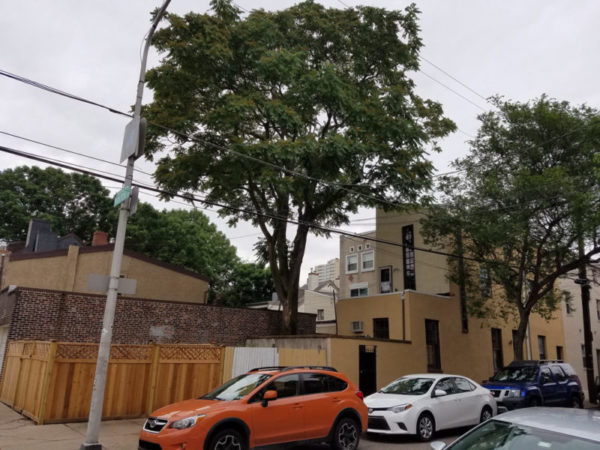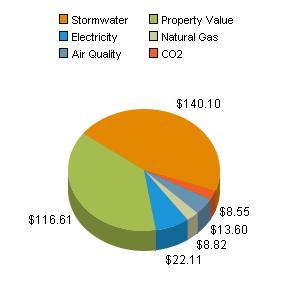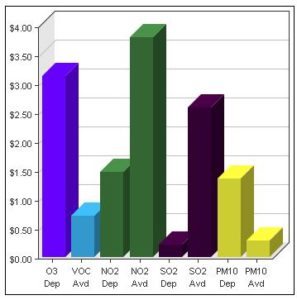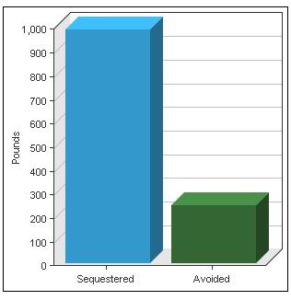Our 80-plus year old tree is in danger from development plans on an adjacent lot that is just too small for building or living, 14ft wide x 20ft deep. The design calls for a 3 story trinity house which would force cutting almost half the branches. If the shock doesn’t kill the tree, it would still be unbalanced, posing the danger of falling toward our house or neighbor’s properties,
- In our very first encounter (Early 2015) before he purchased the lot, we told him the lot would not be worth it. There was no way the local area was going to permit a curb cut for a garage, because they just turned down similar requests to larger houses down the street.
- The next encounter (Saturday 5/16/2015): The gentleman approached saying that he bought the lot property next to our house and said he was going to build upon it. I told him we would fight any zoning changes for the property use. Here is one of his comments as it related to the Old Tree:
You are going to have to get the tree off my property side when I build my work shed.
- That’s when we asked our tree company to trim up the tree as much as possible to get room for the developer. Our Arborist said that if they take away that big branch, we will have to take away the entire tree for safety.
- We heard nothing for a year, until Friday night (6/3/2016), when the developer posted a notice for a zoning meeting on Tuesday 6/7/2016. This left us one weeknight to circulate a petition among the neighbors. In less than 2 hours we got 47 signatures Against the Zoning Relief!
- At the Pennsport Civic Association Zoning meeting (Tuesday, 6/7/2016), the Developer said:
If the tree is on my side, I can trim that, correct?
- After the 6/7 meeting, we figured the next meeting would be on August 3, 2016 with the Philadelphia Zoning Board in downtown Philly. However, we got another late Friday night (6/17/2016) notice for a meeting on Tuesday 6/21/2016. A bunch of neighbors were complaining about the late notice, and how only a few people could make the meeting.
- At the next Pennsport Civic Association Zoning meeting on Tuesday 6/21/2016, I mentioned that we had the arborist clean up the tree as far above his lot as possible. The Developer replied:
Did you get a quote for cutting down the tree?
- Our Neighbors, by cleaning the atmosphere and providing shade for people and animals (see our post: OLD 2ST TREE BENEFIT CALCULATOR )
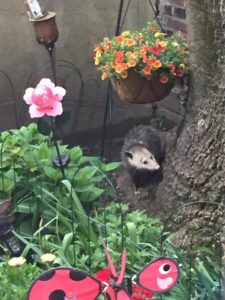
Possum visits the Old Tree May 10, 2016 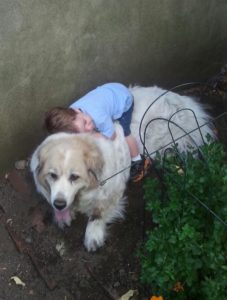
Big Dog and Boy playing Under the Old Tree - Families, as there are so few Big Trees for the kids to see every day
- Wildlife, as this is a great place for birds and even hawks to rest as they migrate, plus small mammals like to visit every once in awhile. (see our category of posts BIG TREES AND ANIMALS )
- The Environment: (see our post: OLD 2ST TREE BENEFIT CALCULATOR )
- CO2
- Storm water
- Energy
- Pollution
